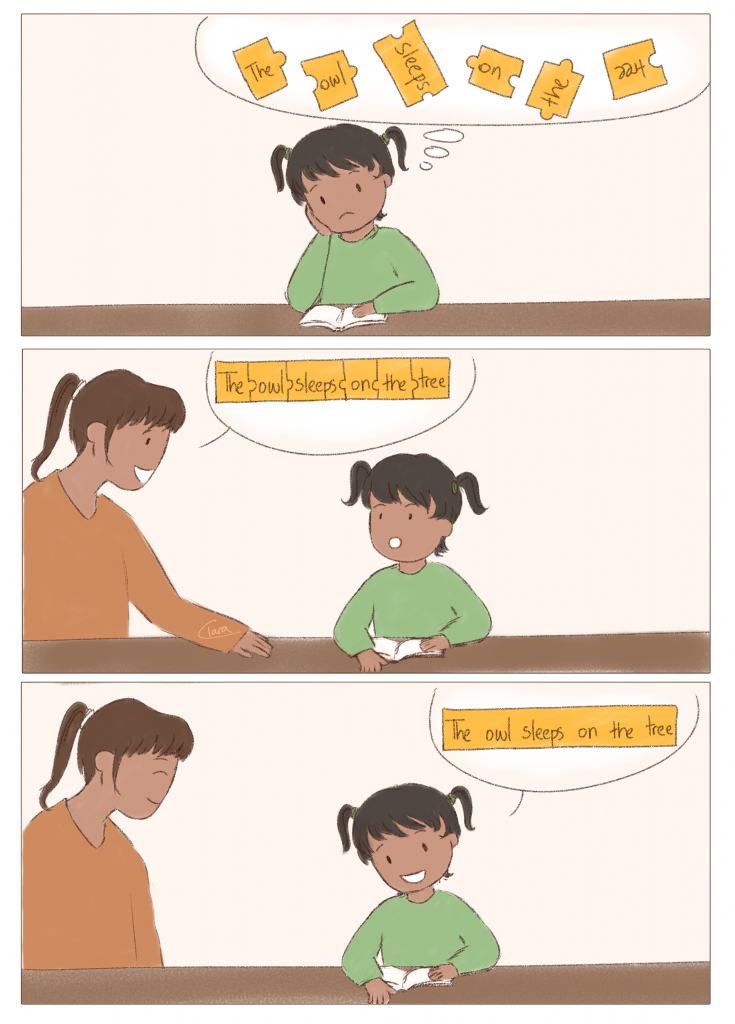How can I help my child read more fluidly?

Imagine a robot reading a sentence word by word:
The. Owl. Sleeps. On. The. Tree.
Now try reading the sentence silently:
The owl sleeps on the tree.
You may have almost heard yourself saying it in your head. It may seem that we read word after word monotonously, when really we read with rhythm, in the same melody we speak.
Children who are learning to read may take time to read with rhythm. They may be able to read the individual words of a sentence, but still struggle to understand the whole sentence. Children who read aloud like they speak, with the same melody, often have higher reading comprehension. Prosody, or the melody of language, matches with grammar, so it can help children understand how the written words string together.
Children were often first taught to read single words and afterward short sentences. Nowadays, a lot of countries start by first teaching children to read short sentences, to encourage fluid reading.
Researchers still have a lot to discover about how prosody, or the melody of language, can help children learn to read. Some ways you can promote a child’s fluid reading from a young age are reading the sentence aloud to them as a model or encouraging them to imagine someone else saying the sentences they see.
The scientific sources of our comic:
Pollatsek, A., & Treiman, R. (Eds.). (2015). The Oxford handbook of reading. Oxford University Press.
Schreiber, P. A. (1991). Understanding Prosody’s Role in Reading Acquisition. Theory Into Practice, 30(3), 158–164.
Schwanenflugel, P. J., et al. (2004). Becoming a fluent reader: Reading skill and prosodic features in the oral reading of young readers. J. of Educational Psychology, 96(1), 119–129.
